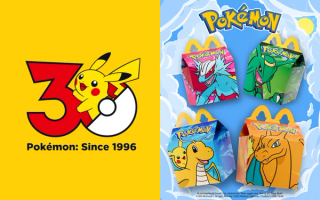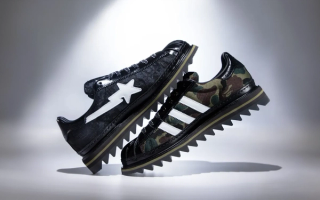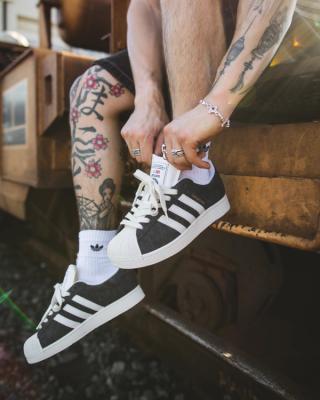In today's world, the terms classic, icon, and legend get thrown around casually, overlooking exactly how they were earned in a time before widespread instant gratification. Luckily, stories like the adidas Superstar's serve as guides to reprogram our vernacular, as well as examples of what to strive towards.
As the popular shell-toe celebrates its 55th anniversary, it's important to give credit where it's due: How many other sneaker designs have performed at the highest level of their sport; helped establish non-athletes as important figures in sportswear; been the footwear of choice for influential counter-cultures across the globe; and endured through dozens of changes to consumer trends?
On this front, House of Heat° has partnered with adidas Originals for a brief overview of the Superstar's past, present, and future. If you want to jump ahead and shop all current styles of the iconic design, check out adidas.com/Superstar right now. Pairs are available in Women's, Men's, Kids', and Infant & Toddler sizing.
A Superstar in the Making

The shell-toe is older than the average House of Heat° reader, but it didn't always exist.
Prior to taking over professional basketball courts across the world, its predecessor—the adidas Supergrip—reimagined what footwear for the sport could be. Findings from its running and tennis models informed the German institution's exploration of a leather sneaker for the hardwood instead of the era's common canvas offerings.
The Supergrip delivered a lighter, more comfortable package than the Allround, a high-top, multi-purpose trainer from 1960 that was marketed as the Allround Basketball in 1961. When the Supergrip hit the market in 1965, it didn't feature a rubber toe cap. Wilhelm Bungert's adidas Tennis model, however, did.
In an attempt to provide enhanced protection to the basketball shoe's forefoot, the Three Stripes began experimenting with a similar rubber element on the Supergrip. The shell-toe's now-iconic ribbed presentation was developed by the brand's team in France. And while it debuted on a version of the Supergrip from '68, the reworked rubber toe cap was reintroduced to market two years later with the proper launch of the Superstar.
A New Era for Basketball
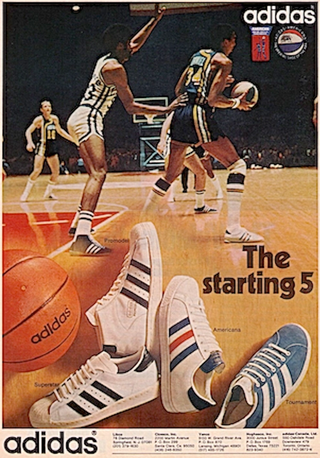
Hoops footwear looks a lot different today, but in the early 1970s, the adidas Superstar was the pinnacle of performance.
In addition to the rugged rubber forefoot, the Three Stripes' silhouette featured a one-piece sole bonded and stitched to the upper for greater resilience; deep profile herringbone traction; heavily-foam-padded tongue; a high SOFTPROTECT heel design; and large built-in nylon heel counter. These elements might seem rudimentary today—with adidas Basketball's current lineup elevating things exponentially—but they demonstrated the brand's commitment to performance innovation.
The Superstar won over a number of top players formerly associated with other companies—including Jerry West and Rick Barry. Its predecessor was modified to serve as a formidable takedown model for high school and college-level basketball players, positioning the shell-toe as adidas' premier offering. A limited supply chain also contributed to the sneaker's elevated status, as professional hoopers were often the only ones with more colorful pairs of the Superstar. Folks who saw team-appropriate styles on television and in ads had to be patient while the European juggernaut figured out production and distribution—in particular across North America. Brothers Chris and Clifford Severn were instrumental in not only the development of the leather basketball shoe, but also its introduction and dominance of the US market.
With the sport's changing demands and adidas' constant pursuit of better, the Superstar underwent a number of modifications by 1980. Styles like the Americana (1971), Half Shell (1974), and Superstar II and Promodel II (1976) provided variations of the blueprint laid by the Supergrip and advanced by the Superstar.
The Three Stripes' hoops division was on fire by the end of the '70s, finding unprecedented success with Kareem Abdul-Jabbar's aptly-named adidas Jabbar (1978) and innovative Top Ten (1979). adidas positioned the latter silhouette as its top-of-the-line performance basketball sneaker, marking a shift in focus away from the shell-toe. Nevertheless, the Superstar continued to form part of the brand's roster, with sales catalogs in the new decade showcasing pairs with felt 3-Stripes and other modifications.
Athletes might've moved on, but the shoe would soon find a home amongst a new crowd.
If It Wasn't for the Bronx...

By '80, New York City had been overtaken by a new music genre called hip-hop. Born in August 1973 at a back-to-school party organized in the Bronx, hip-hop experienced its first hit record by '79, making it the sound of the moment. Every element associated with the genre also became important to youth throughout the five boroughs. Fashion and b-boying went hand-in-hand (feet?), as crews looked to make statements with both their appearances and moves during a given break routine.
The adidas Superstar became an obvious choice for these dancers; its varied color options, European quality, and durable rubber toe cap was up for the toughest moves. Non-breakdancers also took a liking to the shell-toe for these very reasons, adopting it across streets in the South Bronx, Manhattan, Brooklyn, and Queens.
In 1986, three figures from this fourth borough helped solidify the Superstar's position outside of sports to a corporate audience. Jam Master Jay, Joseph Simmons, and Darryl McDaniels—known together as Run-D.M.C.—released the song "My Adidas" as part of their third studio album, Raising Hell. An ode to the once-dominant force on the professional hardwood, the track was the group's most overt declaration that hip-hop and street culture were important to the success of athletic footwear, a previously-unfathomable concept.
Run-D.M.C. provided a more authentic reflection of inner city style than other commercially-successful hip-hop groups of the time, making its official co-sign from the Three Stripes a win for folks across the city.
Co-branded apparel and footwear launched soon after adidas executives saw the influence of the Queens-natives on the Superstar, setting the stage for the sneaker's next four decades.
A Global Superstar

As a sports-oriented institution, adidas' partnership with the musical act from New York City was uncharted territory. Yet, it proved financially smart. On the influence side of things, Run-D.M.C.'s co-sign also allowed the brand to penetrate new markets, finding a cult-like following in none other than Japan.
Throughout their youth, streetwear pioneers the likes of Hiroshi Fujiwara (fragment design) and Tomoaki Nagao—best known as NIGO of A BATHING APE®︎ fame—were inspired by the hip-hop group. The Beastie Boys also served as a point of inspiration for the young creatives.
As a whole, the 1990s were an interesting time for the footwear industry. Performance models from yesteryear had become part of several brand's new retro business. The Superstar never went out of production, but it explored different modifications to address the needs and interests of all-new crowds.
Skaters took to the shell-toe for its durability and accessible price tag. Respected figures in this sport like Mark Gonzales and Joaquim Cardona signed with the Three Stripes in 1996, giving the German institution an authentic co-sign amongst cautious riders. The oft-forgotten canvas Supermodified debuted in '97 with a double-tongue to better accommodate skateboarding.
Nu metal bands Limp Bizkit and Korn helped fill in the gaps for the Superstar once hip-hop widely moved away from the silhouette. In 2024, the latter group received its very own edition of the shoe.

However, it was in 2003 that adidas' retro design received one of its most impactful redesigns ever.
As aforementioned, savvy Japanese consumers became obsessed with the Superstar in previous years—specifically pairs produced in France. NIGO was amongst these figures of Tokyo's Ura-Harajuku scene during the '90s. His BAPE®︎ brand had taken off by the start of the new millennium, with the independent imprint launching footwear styles inspired by classic designs shortly after.
An introduction to Gary Aspden—now head of the ever-tasteful SPZL range—ultimately led to an official collaboration with adidas. The result was a handful of styles of the SUPER APE STAR and SUPER APE SKATE, elevated versions of the Superstar and Pro Model. Limited quantities and a meticulous return to a European-made build made the project cause frenzies across the cities in which the numbered amount of pairs launched. NIGO and the Three Stripes wouldn't collaborate again until April 2011, but they kicked off a new strategy for the sneaker.
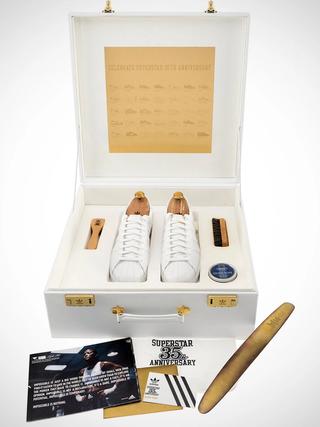
In the lead up to 2005, Aspden and team imagined one of the adidas Consortium program's most ambitious projects to date, all in the name of the Superstar's 35th anniversary. The goal?: 35 versions of the shoe to celebrate 35 years.
Aptly dubbed the "Superstar 35" initiative, the project launched almost three dozen different iterations of the shell-toe. Most releases were limited to just a few thousand pairs, with styles landing at only a select number of boutiques across the globe.
Adidas split offerings into five categories: Consortium Series, Expression Series, Music Series, Cities Series, Anniversary Series. This choice allowed the brand to tap longtime and new partners to help roll-out the Superstar 35 collection, showcasing just how expansive the model's impact had become since '70.
Expert marketing, high-quality craftsmanship, and limited quantities ensured the design's 35th anniversary celebration was special. A "top secret" 35th pair, however, rounded out the festivities.
It never went on sale. Instead, the rare pair was offered as the prize for resilient treasure hunters in Hong Kong, New York, Los Angeles, Berlin, and London. In comparison to the other 34 pairs, the final launch of the Superstar 35 program was handmade entirely out of leather—including the shell-toe and outsole. Upping the luxurious ante, the sneaker arrived with a leather-covered carrying case and gold-plated hardware. An adidas-branded cleaning kit arrived with the sneakers, ensuring those lucky enough to secure the shoes could take care of the premium style.
Throughout the next decade, adidas Originals continued to work with some of its collaborators from the past, while introducing new ones to its roster. Many lent their creative vision to the shell-toe, further expanding its legacy as an important sneaker design.
A Birthday to Remember

The adidas Superstar was not dormant by the start of the 2010s, but it was widely overshadowed by consumer interest in modern tech. The Three Stripes and its competitors saw unprecedented success via their state-of-the-art footwear for running, basketball, and other sports. Things like BOOST cushioning took off as the middle of the decade got going, begging the brand to shift its focus towards innovative franchises like UltraBOOST and NMD. Nevertheless, adidas had long been prepping the Superstar's 45th anniversary, celebrating it alongside launches of all-new footwear lines.
Similar to its reintroduction of the Stan Smith in the early 2010s, the brand made a conscious effort to re-launch the shell-toe across the globe in 2015.

Its own efforts were celebrated by the market with a sales report shared in early 2016 revealing that the Three Stripes sold 15 million pairs of the Superstar in the previous year. With these sales figures, it came as no surprise that the shell-toe was one of the best-selling sneaker designs in North America in the mid-2010s.
Pharrell Williams' co-sign helped the shoe during this time.
At the top of the music industry as a solo act, the Virginia-native was riding the success of his gospel-inspired song, "Happy," during this period. Donning his iconic Vivienne Westwood Buffalo Hat, the legendary musician revealed 50 different makeovers of the beloved Superstar in March 2015. Dubbed the "Supercolor" Pack, Williams' project signaled just how focused the adidas Originals imprint was on the 45-year-old style. Other special editions of the vintage basketball shoe launched throughout the following 20 months, but the "Supercolor" collection was amongst the most important.
The latter-half of the 2010s saw the adidas Superstar cool off before surging in popularity again.
The rise of social media platforms like TikTok helped a new crowd discover the sneaker for the first time. A rejection of highly-technical, futuristic footwear in favor of sleeker, classic designs also assisted the 3-Stripes-branded option join sneaker rotations. Other offerings from the Originals division also became more relevant than ever (but that's a story for another time).
A Superstar Reimagined

The global pandemic in 2020 delayed countless plans, but the Superstar's 50th anniversary celebration went on to be highly successful.
Brought to life with the help of Jonah Hill, adidas Originals launched the "Change Is A Team Sport" campaign to commemorate its sneaker's half-century birthday. Throughout that year, limited edition collaborations with the brand's extended family repositioned the shell-toe in the mainstream. Creatives like Sean Wotherspoon even helped make the silhouette from 1970 one of the Three Stripes' most sustainable, eco-friendly offerings to date via his SUPEREARTH project.
Influential artists didn't get their own collaborations, but their co-signs helped the vintage basketball shoe design reach a broader audience. On this front, members of BLACKPINK made the design coveted by K-Pop fans everywhere, while Anitta turned the style onto Brazil's youth.
The Superstar's classic ensembles remained on shelves at adidas stores throughout the world, but the following five years introduced the shell-toe in some of its most experimental looks ever.
Playful linkups with The Simpsons, for example, brought Marge's signature blue hairdo to the sneaker. Italy's Prada brought its high fashion expertise to the old school performance model, coupling it with a Bowler Bag worth upwards of $2,000. A LEGO® edition of the Superstar allowed diehard fans of the design to showcase the sneaker as a piece of decoration, while further cementing it as a pop culture icon.
2025 and Beyond

Now in its 55th year, the adidas Superstar continues to honor its origins while looking to the future.
The brand's "The Original" campaign (introduced this season) highlights how the decades-old design has cemented itself in a sea of thousands of silhouettes that've come after it. Classic "White/Black" and "Black/White" color schemes remain staples in wardrobes of former b-boys, as well as folks from Gen Z and younger generations.
While not a new endeavor for the shell-toe, experimental collaborations with some of the world's most avant-garde creatives look to take the Superstar through the remainder of 2025 and beyond. Longtime and new partners alike bring boundary-pushing, eyebrow-raising makeovers to the shoe, further distancing it from its basketball origins. In the process, these projects reaffirm how perfect of a canvas the 55-year-old sneaker is; the complete overhauls that the sneaker has undergone by way of Avavav, Pharrell Williams, Edison Chen, and other might've looked out-of-place on other models, but seem at home on the Superstar.
Creatives such as Grace Wales Bonner have promised more elevated versions of the shell-toe by the end of the year. It's likely that other special projects will also surface by then.
What's already been solidified in the first three months of the Superstar's 55th anniversary is that it's earned longevity.
Other footwear designs from the late '60s and early '70s had similar elements, but have long been forgotten by time. In comparison, the shell-toe is still going strong, evoking an emotional response from folks who don't know it debuted over half-a-century ago.
Only time will tell what the shoe's next 55 years will look like, but it's safe to assume the Original will continue being an example of why terms like classic, icon, and legend shouldn't be thrown around so casually.
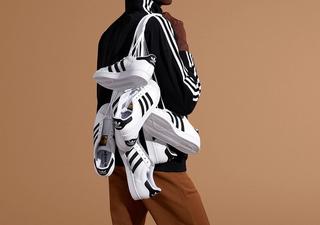
To shop the iconic sneaker, head over to adidas.com/Superstar right now. To check out what other classic footwear and apparel designs are currently being offered by the Three Stripes, visit adidas.com/Originals.
If you need some more convincing, maybe Samuel L. Jackson can help:
For more styles from the German sportswear juggernaut, tap in with House of Heat°'s adidas Basketball coverage, featuring stories on Damian Lillard, Anthony Edwards, and others' signature sneakers.

